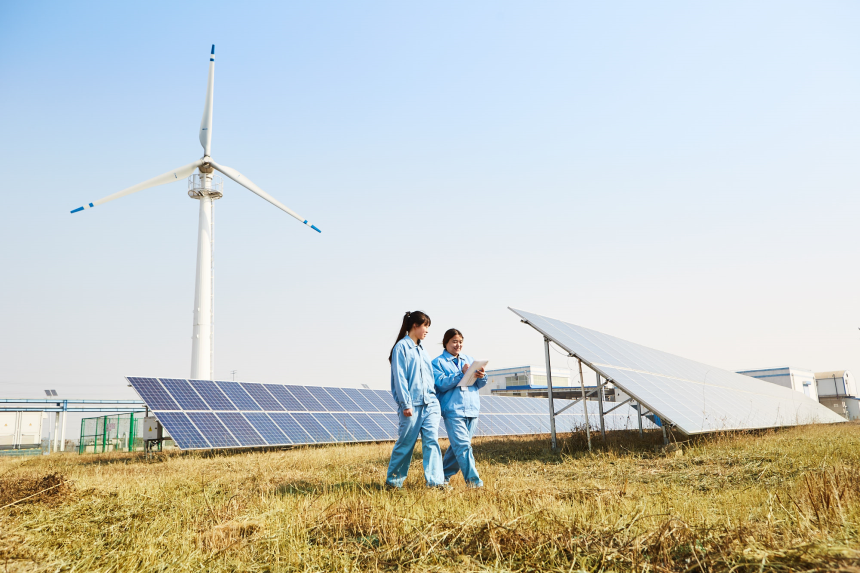
Reporting on the process and outcomes of scenario analysis.
MORE INFORMATIONBy: Unilever

Reporting on the process and outcomes of scenario analysis.
MORE INFORMATIONIn 2016 we conducted a scenario analysis to understand the impact of 2 and 4-degree climate scenarios on our business. We drew on various third-party scenarios as well as TCFD guidance which suggests separating transition impacts from physical impacts.
In our 2017 Annual Report we disclosed details of our scenario analysis, explaining the assumptions which underpinned them and the material impacts that might arise from 2 and 4-degree warming – notably an increase in raw material and packaging costs due to carbon pricing and chronic water stress and extreme weather. To read the full scenario narrative, see our 2017 Annual Report & Accounts, pages 32-33.
We noted that without action, both scenarios would present financial risk to Unilever but that our business would not need to materially change as a result of these risks. Whilst we have been reporting on our actions to mitigate the effects of climate change for some time, this was the first time we had reported on the exposure of our business to physical and transition climate risks, and our plans to ensure we remain resilient in the future.
Scenario analysis is a complex but ultimately valuable exercise. There were a number of issues we needed to address to create our scenarios.
Developing the business case
Recognising climate change as principal risk with financial implications was a precursor to our scenario analysis. Our CEO, Paul Polman, is very active and supportive in addressing climate change risks, setting the tone at the top. It is the role of the Boards and committees such as the Audit Committee to understand climate risks and review them regularly. Commitment from the top and Board level is vital but not enough – there needs to be a business case as well. We found that bringing a long-term risk such as climate change to the table as a priority had the desired impact when the potential financial impact was presented. This allowed senior management to assess materiality, compare to other issues and determine how much resource to use in addressing the issue and timescale required.
Selecting the right model
Climate scenario analysis is an evolving field and consequently there is no one right answer. Furthermore, building a robust scenario analysis can be also be a relatively lengthy process. We invested time up front to agree what constitutes a good model and what cannot be compromised.
We performed thorough up-front screening and assessments to determine the right models for us to use. We used a balanced scorecard technique when choosing different scenarios by analysing a combination of quantifiable and unquantifiable factors and assigning a weighting and score to each factor, which produced an overall ranking of the choices available. This helped to narrow down the list of choices to those that are most robust.
Overcoming complexity and uncertainty
Models are available for specific industries or specific resources but are not global nor are they extensively available. Furthermore, the models that are available all differ in terms of the assumptions used and factors included. This increased the uncertainty and complexity involved in our analysis.
We found it useful to start with a limited number of factors, which have robust data, and then extend to include other factors later if necessary. In line with TCFD guidance, we split the scenarios as follows:
a) transition scenario describing the policy, technology and market shifts in the energy system needed to limit warming to 2-degrees (e.g. IEA)
b) physical scenario describing the changes in the climate system (temperature, water stress, extreme weather etc) associated with more than 2-degrees of warming (e.g. IPCC)
This simple approach of separating transition impacts and physical impacts was sensible to reduce complexity but also created a number of challenges – not least the fact that physical and transition risks are often interdependent yet separation breaks this link. Furthermore, existing transition scenario models have a narrow focus on the energy sector. They provide limited detail on the transition anticipated in the agriculture and land management sectors. In comparison, the physical climate scenarios provide clear analysis of the changes in GHG emissions related to the world in 2030 but are limited in the financial quantification of these impacts and the fact that most of the short term physical risks will materialise regardless of action. To mitigate this, we selected models which provide a global ‘whole energy sector’ and holistic coverage of physical impacts that were data driven rather than narratives. They covered a range of sources from environmental NGOs, to companies and academics.
In developing our scenarios, we also needed to make a number of assumptions to fill data gaps. These were agreed with a core group of Unilever experts and were based on credible third parties, such as the IPCC or IEA, or on previous analysis done by Unilever, such as our carbon footprint estimates.
Presenting the results
Care needed to be taken when presenting the results of the scenario analysis. Given the many uncertainties associated with this type of forward-looking analysis, the results were shown as the mid-points of ranges, not one precise answer. We also performed a number of simulations using different combinations, to produce a range of possible results to overcome potential issues associated with differing assumptions used across different models.
Reporting on the scenarios
Finally, a number of more practical issue needed to be considered from a reporting perspective – specifically how and where to incorporate the TCFD disclosures in our Annual Report & Accounts. We explored ways to integrate the disclosures throughout the Strategic Report but concluded that it would be more useful for report users in a single place. We allocated two pages at the end of the risk section to provide a deep-dive on our scenario analysis, as well as climate risks and opportunities – organised around the main headings of the TCFD framework.